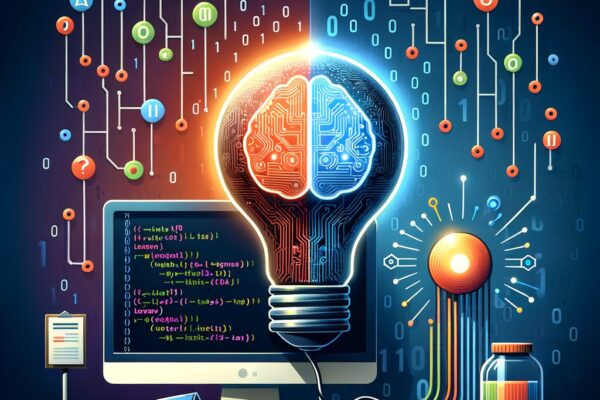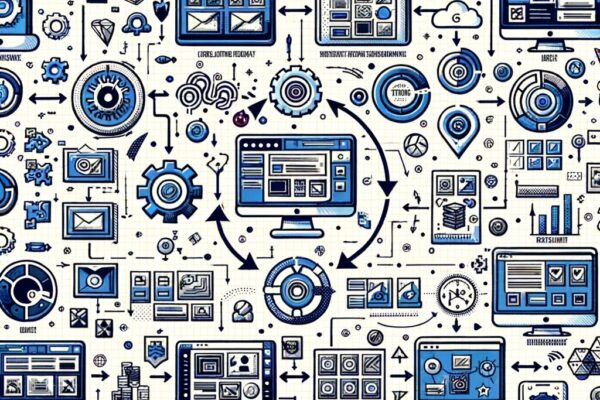
Stop Letting Onboarding Suck Weeks Out of Your Business: Build an AI-Driven, Personalized Workflow That Actually Works
You know the feeling: a new hire’s desk is set, the email is created, and yet—by day five—they’re still asking where the expense form lives, who approves time off, and how to run the core reports. Meanwhile, HR and managers are buried in repetitive tasks: printing forms, copying the same slide deck, scrambling to provision accounts, and delivering the same orientation talk for the 12th time this month. That friction is more than annoying; it costs time, morale, and revenue as new people take longer to contribute.
There’s a practical fix that doesn’t require a team of engineers or a huge LMS contract. AI and low-code automation let small and mid-size organizations build a personalized onboarding workflow that gets people productive faster while preserving the human parts that matter. Here’s a clear, step-by-step way to do it.
Step 1 — Map the reality, not the ideal
Before adding smart tools, list every onboarding touchpoint: paperwork, account provisioning, hardware delivery, mandatory compliance training, job-shadowing, manager check-ins, and any role-specific first-week tasks. Note who does each item, how long it takes, and when it ideally happens.
Why this matters: You’ll separate truly critical steps from “we always did it this way,” which keeps your automation focused and manageable.
Step 2 — Use AI to create role-specific learning paths
Take your task map and feed role descriptions, required skills, and company SOPs into an LLM (e.g., ChatGPT or an enterprise counterpart) or an AI-enabled LMS that can generate personalized curricula. The AI can turn a job profile into a prioritized sequence of micro-lessons: essential processes in week one, tools and deeper topics in weeks two and three.
What this looks like:
- For a customer-support hire: Day 1 micro-modules on ticket triage, Day 2 on escalation, then scenario-based micro-assessments.
- For a sales rep: Quick modules on CRM hygiene, product objections, and a 15-minute role-play assignment.
Tools to try: Use ChatGPT/GPT-4 for initial content outlines; tools like EdApp, Lessonly, or TalentLMS to host microlearning; or enterprise AI features built into Docebo or Cornerstone.
Step 3 — Turn training into short, focused microlearning
Long slide decks breed boredom. Break training into 3–10 minute modules: a short explainer video, a one-page checklist, a 5-question quiz, and a sandbox task. Microlearning respects attention spans and lets new hires complete measurable items between meetings.
Easy content sources:
- Record a 90-second Loom of “How to submit an expense” instead of a 12-slide deck.
- Use AI to convert SOP documents into quiz questions or to draft practice scenarios.
- Embed quick how-to videos and checklists directly in Slack, Notion, or the LMS.
Step 4 — Automate paperwork and account provisioning with low-code integrations
Manual account creation is where delays multiply. Use low-code tools to automate the heavy lifting: trigger account creation when HR marks a candidate as hired, auto-send NDAs for e-signature, and provision access based on role.
Common stacks:
- HRIS: BambooHR, Gusto, or Rippling as the authoritative source.
- E-signature: DocuSign or HelloSign.
- Provisioning: Okta or Google Workspace Admin with automated scripts.
- Low-code orchestration: Zapier, Make (Integromat), or Microsoft Power Automate to connect these pieces.
Example flow: New hire status in BambooHR → Zapier triggers DocuSign NDA → On completion, Zapier calls Okta to create accounts and adds the person to role-specific Slack channels and a Google Drive folder.
Step 5 — Schedule mentoring and human checkpoints with smart calendar tools
Automation should not replace human connection. Smart scheduling tools ease the coordination. Use Calendly or Microsoft Bookings to set recurring mentor check-ins, and integrate with Slack to remind both parties and capture meeting notes.
Include structured human moments:
- Day 3: 30-minute mentor meetup for “what’s confusing?”
- End of week 1: manager review to confirm access and initial tasks.
- 30/60/90-day goal-setting meetings scheduled automatically.
Step 6 — Measure readiness with automated assessments and analytics
Replace gut feeling with signal. Use short automated quizzes, task completions, and mentor feedback forms to measure readiness. Pipe results into a simple dashboard or Google Sheet to track time-to-first-billable-task, training completion rates, and recurring bottlenecks.
Tools and methods:
- Assessment: Typeform, Google Forms, or LMS quizzes.
- Analytics: Use LMS analytics, Looker Studio, or Power BI for a visual dashboard.
- Alerts: Automated emails or Slack notifications when someone fails a critical assessment so a manager can step in.
Implementation checklist for small teams with limited IT support
- Week 0: Inventory onboarding tasks and owners (1–2 hours).
- Week 1: Choose your base HRIS and one low-code tool (Zapier/Make) and an LMS or hosting platform (Notion, Google Drive, or Light LMS).
- Week 2: Use an LLM to draft 3–6 role-specific micro-modules (short prompts, iterate).
- Week 3: Create the first automated workflow: new hire trigger → e-signature → account provisioning → welcome email with learning path.
- Week 4: Add mentor scheduling and two automated assessments. Launch pilot with 1–2 hires.
- Ongoing: Collect feedback, refine modules, and add analytics.
Keep it minimal: start with the absolute essentials—forms, accounts, and a 3-module learning path—then expand.
Preserve compliance and the human touch
Automation can tidy your process without making it sterile. For compliance:
- Keep audit trails for e-signatures and provisioning (DocuSign, Okta logs).
- Limit access by role and use single sign-on and password managers (1Password Business, LastPass).
- Store training completion and certifications in your HRIS for easy reporting.
For human connection:
- Use short video introductions from the manager and team; AI can help script these but the video should be real.
- Maintain mentor check-ins and feedback loops; automation should free time for meaningful conversations, not eliminate them.
- Tailor microlearning to the person—AI-generated personalization is valuable, but allow managers to override or augment it.
Common pitfalls and how to avoid them
- Trying to automate everything at once. Start small and iterate.
- Letting AI replace judgment. Use AI to draft and personalize; have humans approve critical compliance and role-specific content.
- Ignoring edge cases. Maintain a manual fallback process for exceptions.
Final note: Where to get help
If this roadmap sounds doable but you lack the time or expertise to implement it, MyMobileLyfe can help. They specialize in helping businesses use AI, automation, and data to make teams more productive and save money. Whether you need an end-to-end onboarding automation, a pilot for one role, or help wiring your HRIS to provisioning and analytics, MyMobileLyfe can translate this plan into a working workflow. Learn more at https://www.mymobilelyfe.com/artificial-intelligence-ai-services/.
This isn’t about replacing human warmth with bots. It’s about removing the busywork that drowns your people and giving new hires a clear, human-led path to doing meaningful work sooner.
















































































































































































Recent Comments